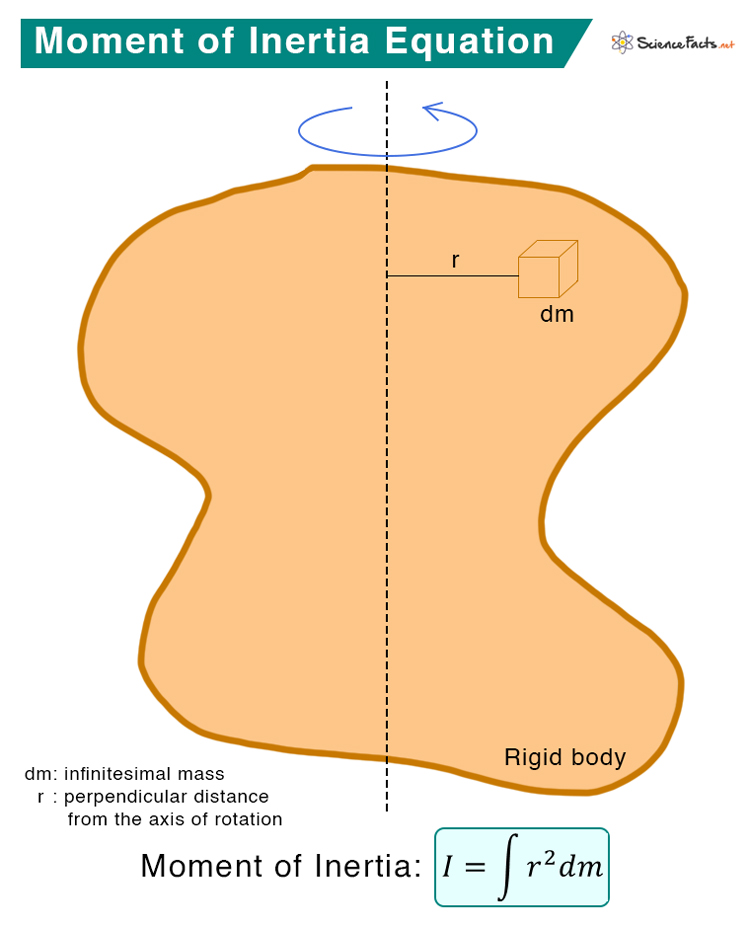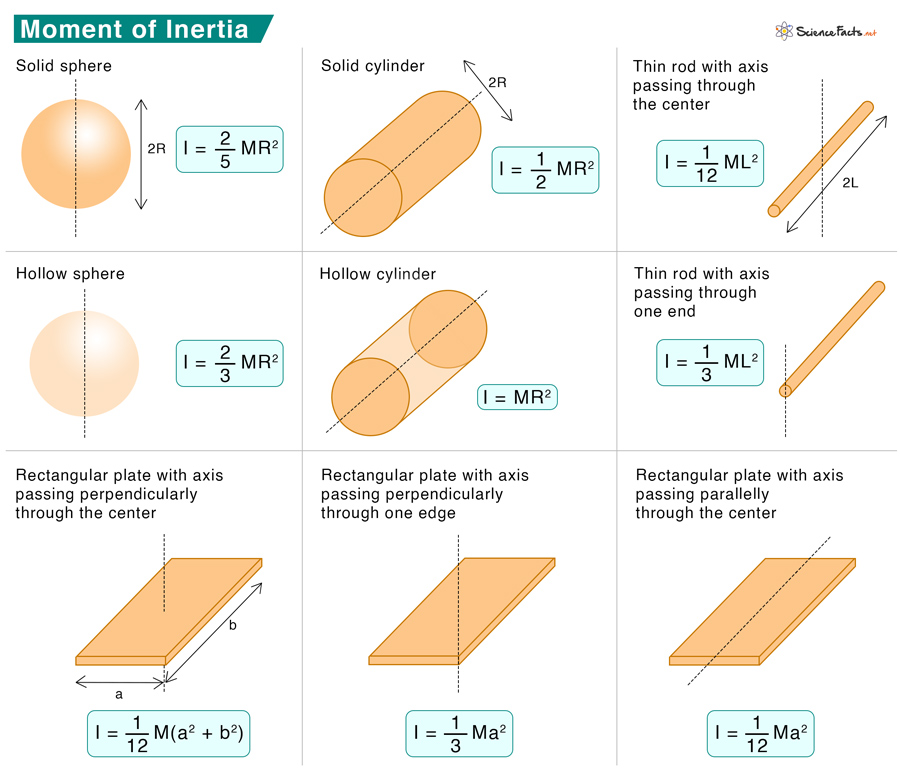Moment of Inertia
Moment of inertia, also known as rotational inertia or angular mass, is a physical quantity that resists a rigid body’s rotational motion. It is analogous to mass in translational motion. It determines the torque required to rotate an object by a given angular acceleration. Moment of inertia does not restrict itself to a rigid body only. It also applies to a system of particles rotating about a common axis.
How to Calculate Moment of Inertia
Point Mass
For a point mass (single body), the moment of inertia formula is given by the product of mass and the square of the object’s perpendicular distance from the axis of rotation.
Where
I is the moment of inertia
m is the mass
r is the perpendicular distance from the axis of rotation
System of Particles
Suppose n particles of masses m1, m2, …, mn rotate about a common axis at perpendicular distances r1, r2, …, rn from the axis. Then the moment of inertia of the system is
The moment of inertia of a system of particles is the sum of the moments of inertia of the individual particles taken about a common axis.
Units and Dimensions
The SI unit of moment of inertia is kgˑm2, and the cgs unit is gˑcm2. The dimension is [M L2 T0].
Integral Moment of Inertia
For a continuous mass distribution, the integral form of moment of inertia is given by
Where dm is the instantaneous mass.
The above equation can also be written in terms of density ρ and instantaneous volume dV as follows.
Moment of Inertia Table
Several everyday objects, such as rotating disks, cylinders, and spheres, have well-defined moment of inertia formulas. A chart consisting of the different formulas is listed in the table below. Here M represents mass, R represents radius, and L represents the length.
| Object | Moment of Inertia Formula | Object | Moment of Inertia Formula |
|---|---|---|---|
| Solid Sphere | (2/5)MR2 | Rectangular plate with sides of length a and breath b and axis passing perpendicularly through the center | (1/12)M(a2 + b2) |
| Hollow Thin-Walled Sphere | (2/3)MR2 | Rectangular plate with sides of length a and breath b and axis passing perpendicularly through the edge | (1/3)Ma2 |
| Solid Cylinder | (1/2)MR2 | Rectangular plate with sides of length a and breath b and axis passing parallelly through the center | (1/12)Ma2 |
| Hollow Thin-Walled Cylinder | MR2 | Slender rod with the axis through the center | (1/12)ML2 |
| Hollow Cylinder, with inner radius R1 and outer radius R2 | (1/2)M(R12 + R22) | Slender rod with the axis through one end | (1/3)ML2 |
Moment of Inertia and Rotational Kinematics
The moment of inertia of a rotating object about a fixed axis is useful in calculating a few key quantities in rotational motion. Newton’s second law for rotation gives a relationship between torque, moment of inertia, and angular acceleration. According to this law,
Where
τ is the applied torque
I is the moment of inertia
α is the angular acceleration
The relationship between moment of inertia and rotational kinetic energy is given by
And with angular momentum, the equation is
Where
K is the rotational kinetic energy
L is the angular momentum
ω is the angular velocity
Factors Affecting Moment of Inertia
The moment of inertia depends upon
- The shape of the object
- Mass distribution or density
- Location of the axis of rotation
-
References
Article was last reviewed on Wednesday, August 2, 2023









